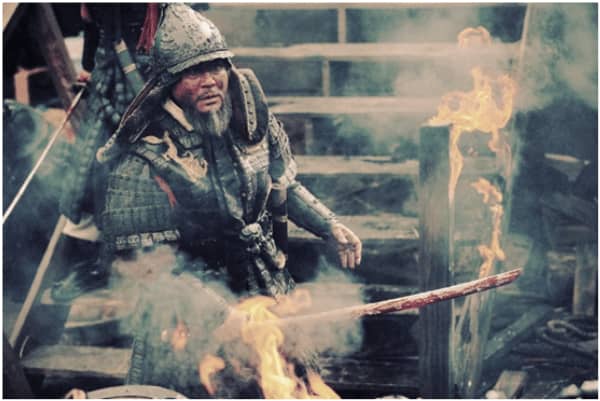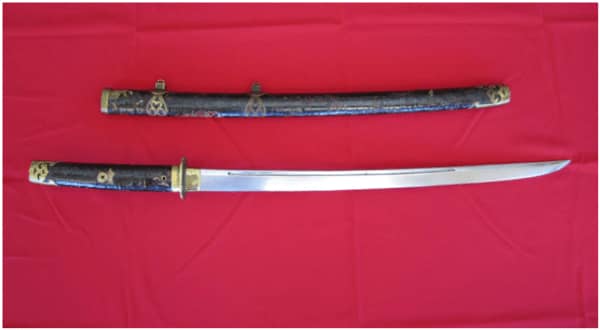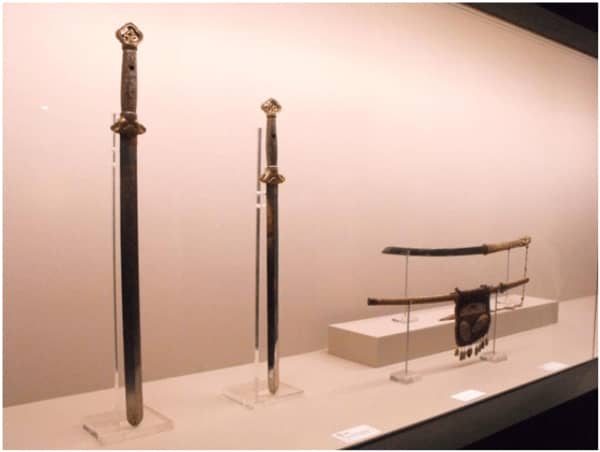The Korean Peninsula (including the current North Korea and South Korea) is located at the easternmost tip of China, surrounded by the sea on three sides, and there are traces of human activities 100,000 years ago. In ancient China, North Korea was called Koryo, Goguryeo, Baekje, Silla, Joseon and many other country names in different dynasties, until the Ming Dynasty of China gradually officially named the country as North Korea. The name of the country of North Korea means “the country where the sun shines brightly”.
Historically, the Korean Peninsula was a vassal state of China for a long time in ancient times, and had frequent cultural exchanges and war conflicts with the ethnic groups in northern China and the Japanese archipelago. After the early 19th century, it was invaded and annexed by Japanese colonists, but in the 1950s, due to the outbreak of the Korean War, it was split by the United States into North Korea and the Republic of Korea.
▲The film and television work “Mingliang Sea Battle” records the image of Koreans fighting Japanese pirates in the 15th century
Korean traditional cold weapons have been deeply influenced by Chinese traditional culture from ancient times to the 19th century. They were either directly imported by Chinese trade, or imitated and modified by themselves, so that they are almost indistinguishable from Chinese cold weapons.
Korea has been a Japanese colony since the Japanese landed and invaded Korea in the 18th century. Japanese cold weapon archaeologists have excavated ancient Korean tombs in South Pyongan Province, Lelang County, and Hwanghae Road in North Korea for 30 years. However, the age of the tombs does not exceed the pre-Qin period of China, so there are few stone soldiers in the reports. More copper cold weapons have been unearthed, and some of them were purchased and collected by Europeans before the Japanese excavated them.
▲The bronze pipa-shaped rapier unearthed in Korea is said to be similar in appearance to the bronze pipa-shaped rapier used by the Xianbei people in Northeast China
Among them, the British collectors have bronze cold weapons from Goryeo. Among them are two bronze spearheads that are similar to the weapons of the Shang and Zhou Dynasties in China. There are also small bronze swords or daggers that are completely in the Korean style. Their blades are large and rounded, resembling Siamese knives The shape is different from traditional Chinese swords, but the guard is like the Chinese Han style. The handle has a special shape. There is a middle hole near the guard, and the two holes at the end of the handle are arranged like binoculars. The tongue can move up and down by a small nail. From this, it can be concluded that this sword belongs to the shape left over from the Stone Age of Korea.
As for the bronze weapons unearthed by the Japanese, most of them are cold weapons close to the pre-Qin period in China, and many of them are from the Han Dynasty. In particular, there are more jade swords in the Han Dynasty than those unearthed elsewhere, and there are also a lot of Han crossbows. There are especially many Chinese pre-Qin bronze spears, Ge, halberds, knives, axes, and arrowheads unearthed in Korea, as well as many iron cold weapons of the Han Dynasty.
▲The various bronze cold weapons unearthed in North Korea are very closely related to the Chinese cold weapon culture
The bronze spears unearthed in Korea are sometimes similar to the bronze spears of the pre-Qin period in China, and sometimes have a unique shape. Very short, unnamable. Japanese archaeologists call it a bronze sword, or it may be a relic of an ancient spear-shaped sword, but it is feared that it is a spearhead, whose stem has broken off its ears.
The bronze sword unearthed in the South Pyongan Province of Korea is the same as that unearthed in the 25th year of Qin Shihuang in China. The handle is also different from the Chinese pre-Qin bronze sword, and it is a Korean sword. Most of the other bronze weapons have the same shape as the Chinese bronze soldiers, so I won’t repeat them here. There are also many unearthed iron cold weapons, such as the long-bladed iron swords of the ring road, which are similar to the iron swords of the Warring States Period and the early Han Dynasty.
It can be seen from the above that the shape of Korean swords began to form an important dividing line in the Ming Dynasty in China. Before that, the style of bronze swords and iron cold weapons at that time belonged to the Northeast Asian style, and the shape of iron swords was consistent with that of China. In the middle and late Ming Dynasty of China, North Korea gradually merged the two styles of Chinese and Japanese swords. The style of equipment and sword (sword) scabbard was more inclined to the Central Plains of China, while the shape of the blade was more Japanese.
This mixed style of Chinese and Japanese forms the distinctive characteristics of Korean swords, which makes people feel both familiar and strange. Most of the existing swords in the Korean peninsula have Ruyi ring heads, wide and thick blades, lotus-leaf-shaped sword grids, and mostly iron hilts. They are all typical of the influence of cultural factors in the Central Plains. The style of Korean peninsula swords is basically not influenced by Japanese style, and basically consistent with Chinese culture.
▲The style of the Korean sword is basically the same as that of the Central Plains. The head of the sword is mostly Ruyi ring head, and the blade is wide
The octagonal swords on the Korean peninsula are almost the same as those of the Ming Dynasty. The octagonal swords in the Central Plains are mostly in the shape of fish heads, and then gradually abandoned the shape of fish heads, single blood groove, and the tip of the knife has a reverse blade. The blade styles of the Zhongyuan octagonal knife and the Korean octagonal knife in the late Ming Dynasty are very consistent. What is more special about North Korea is that there is a blade clip at the bottom of the blade, and the style of this blade clip is completely Japanese.
▲The Korean octagonal hand-blocking knife (above) has a side profile similar to the Yanling knife of the Ming Dynasty in China (below)
In 1592 AD, the Japanese hero Toyotomi Hideyoshi led 150,000 troops across the sea to invade Korea. War exchanges brought Japanese sword culture to the Korean battlefield. The knives on the Korean peninsula should gradually learn the shape of Japanese knives from this stage, imitating a large number of Japanese knives, the blade shape completely imitates Japanese knives, the blade body is made of a pickaxe, and it has a Japanese-style knives. The Korean knives are not like Japanese knives. At this stage, the Korean knife gradually formed a mixture of the Ming Dynasty and Japan.
▲The Korean sword is very similar to the Japanese sword, but without the sharp edge of the Japanese sword, the blade body is relatively straight
In short, the swords and swords of the Korean peninsula have formed their own style in the gap between China and Japan. The weapons of a nation cannot lie. They represent the emotional expression of people in that era, so today we will re-examine North Korea. The sword, in the change of its sword shape, can deeply feel that North Korea has been influenced by China and Japan during its existence for more than a thousand years, forming an obvious hybrid. The Korean sword is the epitome of Korean people. In the eyes of the Japanese sword, in the eyes of the Japanese, it is a weapon on the mainland. The same is true for the Koreans. The Chinese think that he looks like a Japanese, and the Japanese think that he looks like a Chinese.
▲Korean knife
Click to have more Shieldon EDC knives factor.












